UCM’s history of teaching the next generation of educators stretches back to when it was founded in 1871 as Normal School Number Two.
To fulfill its goal of educating the next generation of teachers, the UCM campus housed two laboratory schools to train aspiring teachers. In addition, elementary and high school students passed through the schools.
Central Elementary served kindergarten through eighth grade. The high school — College High from the 1930s to 1972, and University High from 1972 to 1976 — taught students ninth through 12th grade. The schools occupied both the first and third floor of the Pauline A. Humphreys Building until the elementary school, now the Art Center, opened in 1960. The high school moved to the first floor of the Warren C. Lovinger Building when it opened in 1968.
The history of the laboratory school goes back to the founding of the university in 1871, although Training High School — the predecessor of University High — was founded as a two-year school in 1913. On March 6, 1915, a devastating fire ravaged through campus, destroying all buildings except Dockery. By 1917, classes resumed in the newly-built Training School (now the eastern wing of Humphreys) and the school expanded into a four-year high school.
Life at University High was similar to many other public high schools. The school had a strong rivalry with Warrensburg public schools. Athletic teams such as basketball, football and others attended state championships. The school had its own pep club; yearbook, “The Rhetorette;” and newspapers, “The Colabecho,” “Colt Capers” and “The Roundup.”
University High boasted a tight-knit community thanks to its small attendance numbers.
John Culp, a 1965 graduate of College High, went to elementary and high school in the Humphreys Building.
“It was a positive atmosphere and every day you looked forward to going to school,” Culp said.
“It was a community and a family,” Culp said. “I think that’s what College High was all about.”
Culp said two teachers at University High, Clarence Whiteman and Clarence Pearce, a vocational agriculture teacher, had a tremendous impact on his life.
“When we had major decisions to make, (Pearce) walked out of the room and allowed us to make the decisions,” Culp said. “That’s how much faith he had in all of his students.”
Whiteman coached football and basketball. Culp said players respected him despite his strict coaching style. Whiteman once asked Culp a favor during a football game against Appleton City.
“Before we went down, Coach Whiteman said, ‘Johnny, I want you to be my quarterback in heaven,’” Culp said. “I’ll never forget that.”
The College High Colts defeated the Appleton City Bulldogs 7-6 that evening.
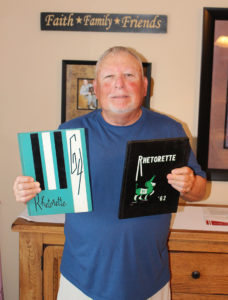
Photos by Garrett Fuller, assistant design editor.
John Culp holds two copies of the Rhetorette, the yearbook for the laboratory high school. Culp graduated in 1965.
Because the school’s purpose was partly to train aspiring teachers, student teachers would regularly teach and observe classes while learning from seasoned professionals. In Central Elementary, cameras mounted on the walls kept watch on the classroom while aspiring teachers observed silently in another room.
Mick Luehrman, a 1970 graduate of College High, said students made it a priority to test the student teachers’ patience.
“We sort of took it as our responsibility to give them a little bit of a hard time,” Luehrman said. “Because that was something they would need to learn how to deal with. But maybe we took a little too much pride in that. I won’t say we were mean, but we were a tough audience.”
Despite being a tough audience, many students enjoyed having the ability to learn from student teachers. The student-teacher interaction, in addition to the school being located directly on campus, made transitioning into college life easy for graduates.
“Throughout my time there I had a number of student teachers,” said Jeff Murphy, assistant director of Integrated Marketing and Communication and 1976 graduate from University High. “Sometimes they would come in for a week, sometimes a couple weeks, sometimes they may be with us for a semester. But I was exposed very early to college students. That kind of influenced me when I did graduate. It was easy for me to make the transition from University High to the university as a student because I was just so familiar with this place.”
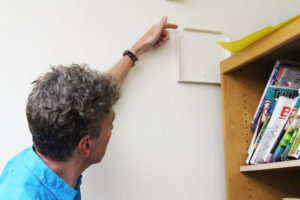
Mick Luehrman points out a camera mount that is still present in the Art Center.
For students in the laboratory schools, the college atmosphere extended to them.
“Being on the campus, you thought you were in college,” Culp said.
Although University High was a high school, university facilities were shared and university faculty extended their help to the high school students.
“We have been so lucky to be located on a university campus,” Pearce said in the 1976 graduating issue of the Daily Star-Journal. “All the facilities are the same as ours. And I don’t know a university professor who wouldn’t bend over backwards to help one of our high school students.”
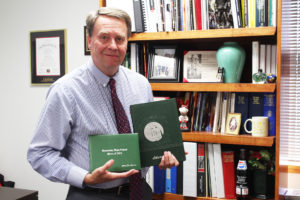
Jeff Murphy holds up his diploma and senior Rhetorette. Murphy was a part of the last graduating class in 1976.
Many University High alumni would stay and attend college at the university, while others would move on.
University High closed in June 1976 due to budget issues. Central Elementary closed four years later. According to a 1976 article in the Muleskinner, the university estimated $150,000 was saved each year by closing University High.
Despite the schools being closed for decades, alumni still connect with others through class reunions and all-school reunions every five years. The reunions are well attended by alumni and their families.
“I think those who were a part of College High or University High are excited about keeping that tradition alive and making sure we have a place that we can gather every five years,” Murphy said. “We have classes that continue to have their own reunions. The university is very good about working with its College High and University High alumni to make sure they continue to feel at home.”
A monument to commemorate the laboratory schools was erected by the Humphreys Building’s southeast entrance.
University High’s legacy has been etched into the lives of its alumni and the university history.
In 1930, Dorothy Anderson discussed these feelings in an issue of the Rhetor Junior, the precursor of the Rhetorette.
“We sit and dream of the happy days that have passed within the walls of our school,” Anderson wrote. “Time is swiftly making its mark upon the students there… each one of us has his memories of schooldays (sic) that have gone before. Tomorrow holds adventures. Yesterday — memories, memories, ah! Wonderful memories.”


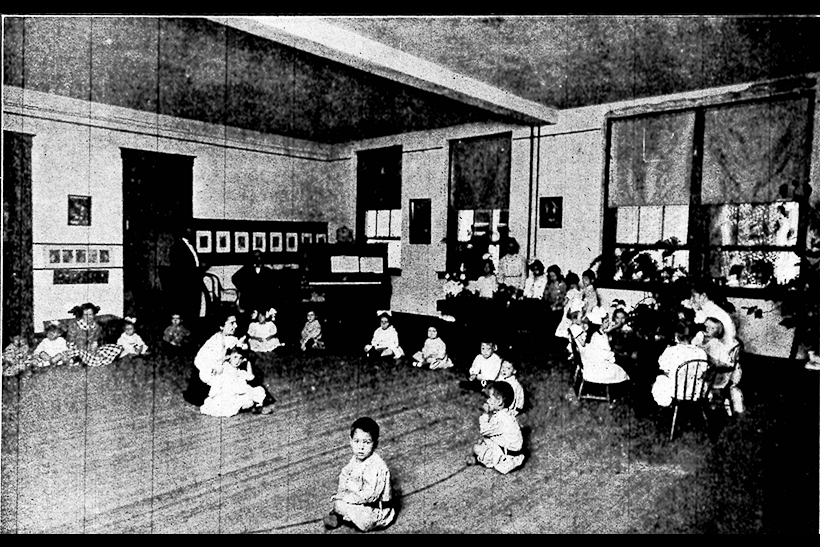
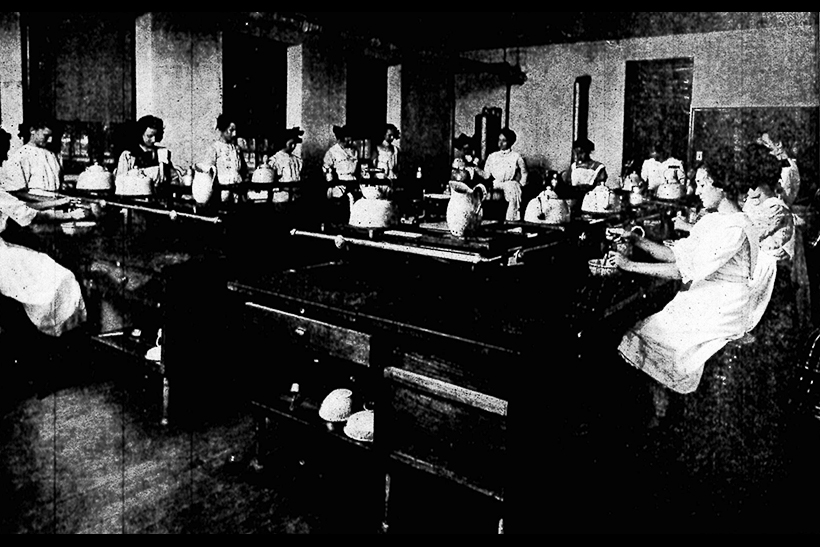
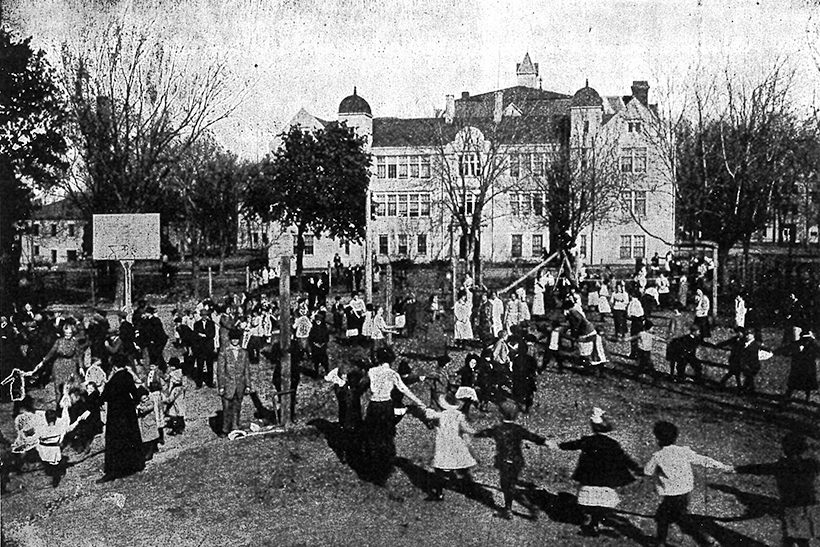
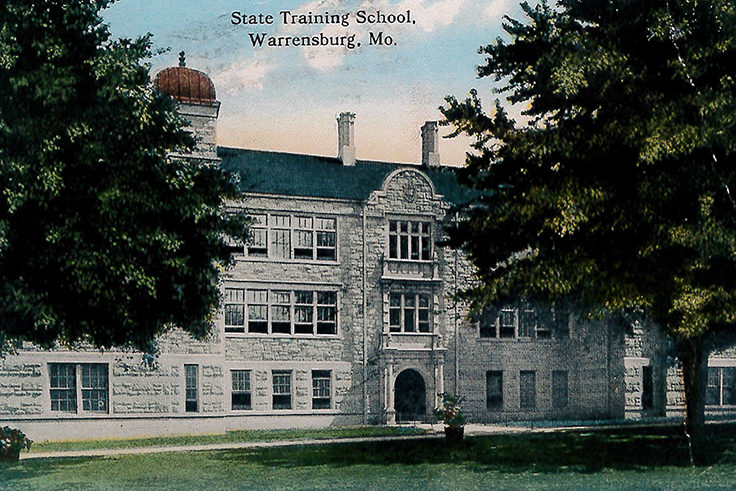
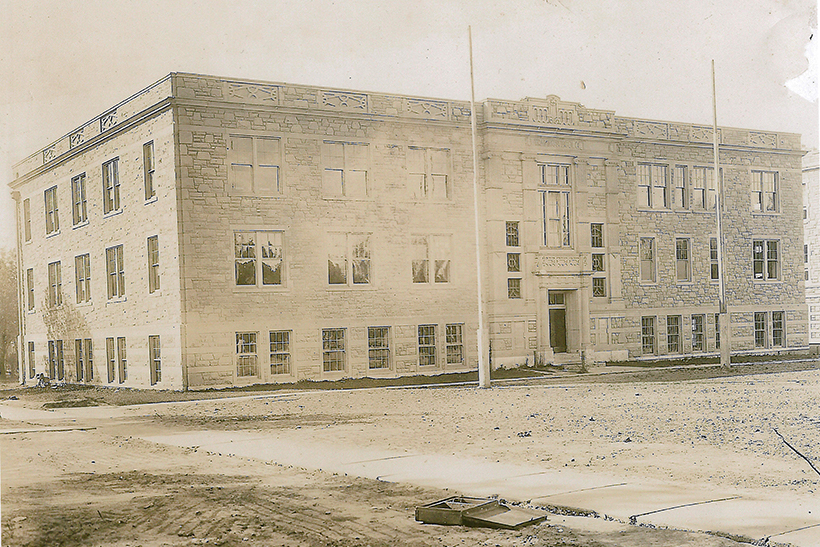

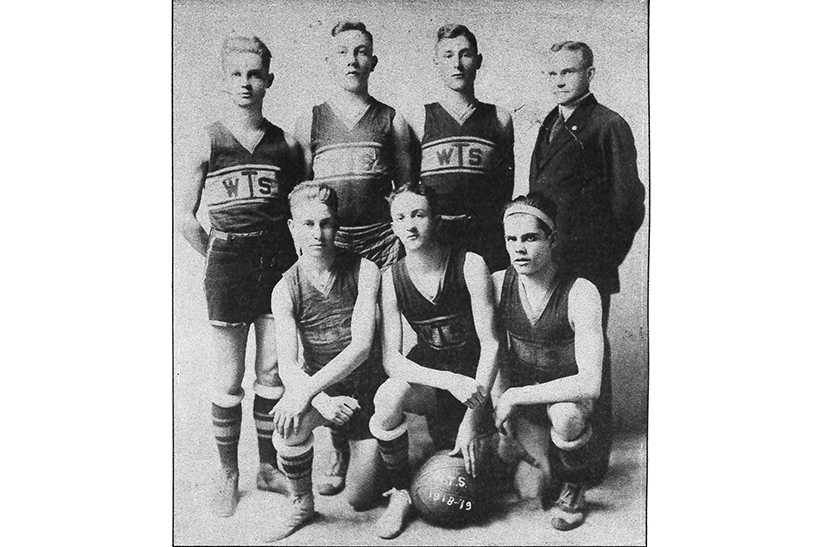
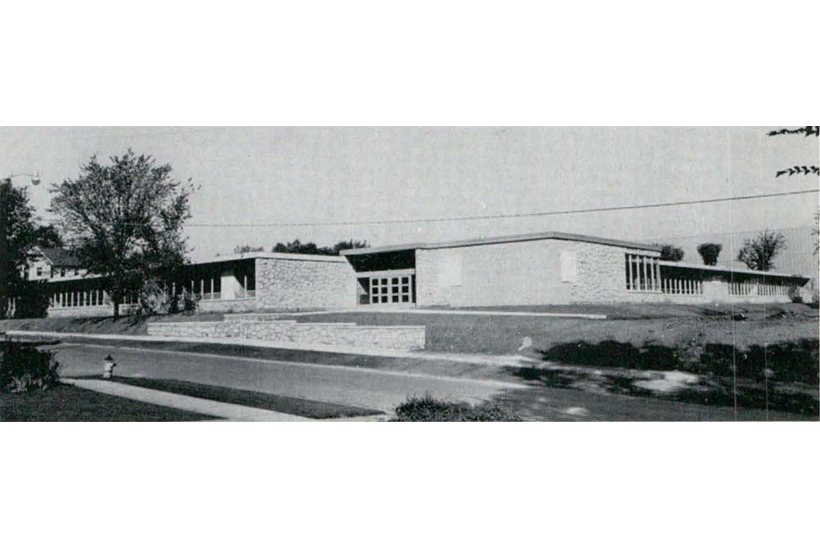
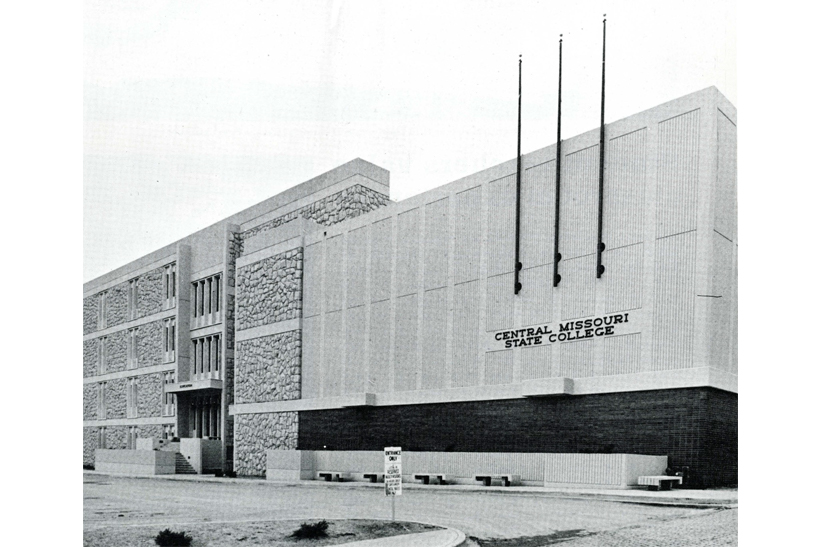
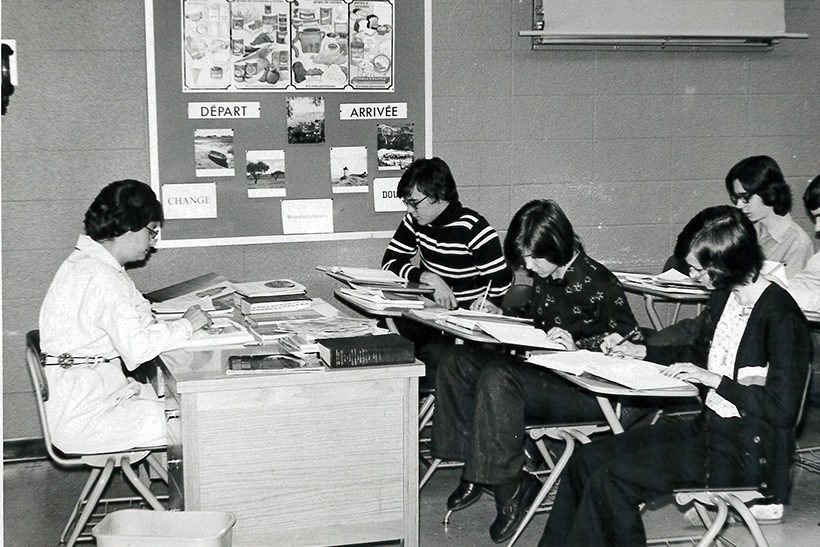
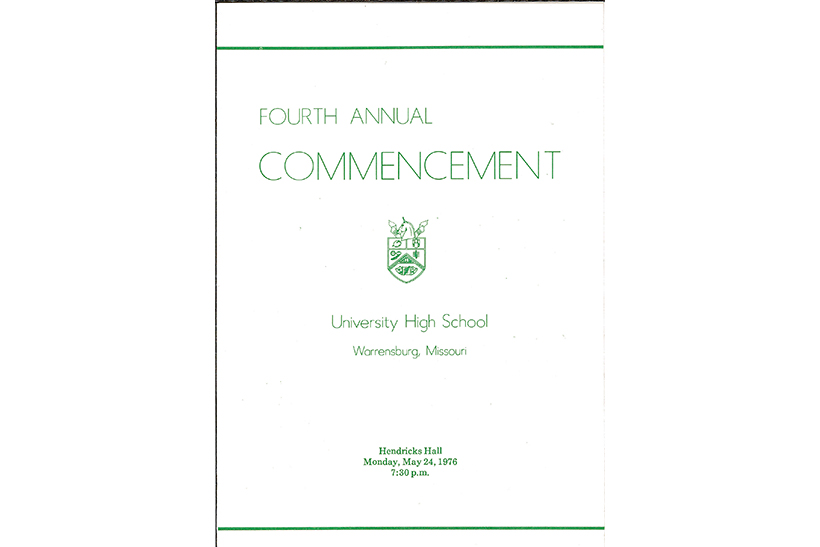

I attended College High School (though not the Elementary School) as a member of the Class of 1972. The experience was fantastic with outstanding faculty, facility and student body. Those years are cherished in my memory as few other periods in my life are. In the Marine Corp they say “Once a Marine, Always a Marine”. I say “Once a Colt, Always a Colt”. Thank you for the great article, and thanks to the College for the opportunity to attend such a fine institution.